Potrebujeme váš súhlas na využitie jednotlivých dát, aby sa vám okrem iného mohli ukazovať informácie týkajúce sa vašich záujmov. Súhlas udelíte kliknutím na tlačidlo „OK“.
ASTM E2147-01(2013)
Standard Specification for Audit and Disclosure Logs for Use in Health Information Systems (Withdrawn 2017)
Automaticky preložený názov:
Štandardné špecifikácie pre overovanie a zverejňovanie protokolov pre použitie v zdravotníckej informačné systémy
NORMA vydaná dňa 1.3.2013
Informácie o norme:
Označenie normy: ASTM E2147-01(2013)
Poznámka: NEPLATNÁ
Dátum vydania normy: 1.3.2013
Kód tovaru: NS-44466
Počet strán: 6
Približná hmotnosť: 18 g (0.04 libier)
Krajina: Americká technická norma
Kategória: Technické normy ASTM
Kategórie - podobné normy:
Anotácia textu normy ASTM E2147-01(2013) :
Keywords:
ICS Number Code 35.240.80 (IT applications in health care technology)
Doplňujúce informácie
| Significance and Use | ||||||||||||||||||
|
4.1 Data that document health services in health care organizations are business records and must be archived to a secondary but retrievable medium. Audit logs should be retained, at a minimum, according to the statute governing medical records in the geographic area. 4.2 The purpose of audit access and disclosure logs is to document and maintain a permanent record of all authorized and unauthorized access to and disclosure of confidential health care information in order that health care providers, organizations, and patients and others can retrieve evidence of that access to meet multiple needs. Examples are clinical, organizational, risk management, and patient rights' needs. 4.3 Audit logs designed for system access provide a precise capability for organizations to see who has accessed patient information. Due to the significant risk in computing environments by authorized and unauthorized users, the audit log is an important management tool to monitor, access retrospectively. In addition, the access and disclosure log becomes a powerful support document for disciplinary action. Audit logs are essential components to comprehensive security programs in health care. 4.4 Organizations are accountable for managing the disclosure of health information in a way that meets legal, regulatory, accreditation and licensing requirements and growing patient expectations for accountable privacy practices. Basic audit trail procedures should be applied, manually if necessary, in paper patient record systems to the extent feasible. Security in health information systems is an essential component to making progress in building and linking patient information. Successful implementation of large scale systems, the use of networks to transmit data, growing technical capability to address security issues and concerns about the confidentiality, and security provisions of patient information drive the focus on this topic. (See Guide E1384.) 4.5 Consumer fears about confidentiality of health information and legal initiatives underscore disclosure practices. Patients and health care providers want assurance that their information is protected. Technology exists to incorporate audit functions in health information systems. Advances in security audit expert systems can be applied to the health care industry. Emerging off-the-shelf products will be able to use audit logs to enable the detection of inappropriate use of health information. Institutions are accountable for implementing comprehensive confidentiality and security programs that combine social elements, management, and technology. |
||||||||||||||||||
| 1. Scope | ||||||||||||||||||
|
1.1 This specification is for the development and implementation of security audit/disclosure logs for health information. It specifies how to design an access audit log to record all access to patient identifiable information maintained in computer systems and includes principles for developing policies, procedures, and functions of health information logs to document all disclosure of health information to external users for use in manual and computer systems. The process of information disclosure and auditing should conform, where relevant, with the Privacy Act of 1974 (1).2 1.2 The first purpose of this specification is to define the nature, role, and function of system access audit logs and their use in health information systems as a technical and procedural tool to help provide security oversight. In concert with organizational confidentiality and security policies and procedures, permanent audit logs can clearly identify all system application users who access patient identifiable information, record the nature of the patient information accessed, and maintain a permanent record of actions taken by the user. By providing a precise method for an organization to monitor and review who has accessed patient data, audit logs have the potential for more effective security oversight than traditional paper record environments. This specification will identify functionality needed for audit log management, the data to be recorded, and the use of audit logs as security and management tools by organizational managers. 1.3 In the absence of computerized logs, audit log principles can be implemented manually in the paper patient record environment with respect to permanently monitoring paper patient record access. Where the paper patient record and the computer-based patient record coexist in parallel, security oversight and access management should address both environments. 1.4 The second purpose of this specification is to identify principles for establishing a permanent record of disclosure of health information to external users and the data to be recorded in maintaining it. Security management of health information requires a comprehensive framework that incorporates mandates and criteria for disclosing patient health information found in federal and state laws, rules and regulations and ethical statements of professional conduct. Accountability for such a framework should be established through a set of standard principles that are applicable to all health care settings and health information systems. 1.5 Logs used to audit and oversee health information access and disclosure are the responsibility of each health care organization, data intermediary, data warehouse, clinical data repository, third party payer, agency, organization or corporation that maintains or provides, or has access to individually-identifiable data. Such logs are specified in and support policy on information access monitoring and are tied to disciplinary sanctions that satisfy legal, regulatory, accreditation and institutional mandates. 1.6 Organizations need to prescribe access requirements for aggregate data and to approve query tools that allow auditing capability, or design data repositories that limit inclusion of data that provide potential keys to identifiable data. Inferencing patient identifiable data through analysis of aggregate data that contains limited identifying data elements such as birth date, birth location, and family name, is possible using software that matches data elements across data bases. This allows a consistent approach to linking records into longitudinal cases for research purposes. Audit trails can be designed to work with applications which use these techniques if the query functions are part of a defined retrieval application but often standard query tools are not easily audited. This specification applies to the disclosure or transfer of health information (records) individually or in batches. 1.7 This specification responds to the need for a standard addressing privacy and confidentiality as noted in Public Law 104–191 (2), or the Health Insurance Portability and Accountability Act of 1996 (3). |
||||||||||||||||||
| 2. Referenced Documents | ||||||||||||||||||
|
Podobné normy:
Historická
1.5.2011
Historická
1.3.2013
Historická
15.12.2013
Historická
15.12.2013
Historická
15.12.2013
Historická
1.11.2013
Odporúčame:
EviZak - všetky zákony vrátane ich evidencie na jednom mieste
Poskytovanie aktuálnych informácií o legislatívnych predpisoch vyhlásených v Zbierke zákonov od roku 1945.
Aktualizácia 2x v mesiaci !
Chcete vedieť viac informácii ? Pozrite sa na túto stránku.


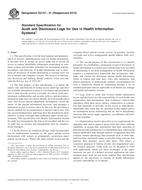
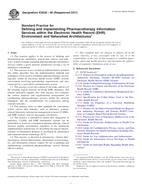 ASTM E2538-06(2011)..
ASTM E2538-06(2011)..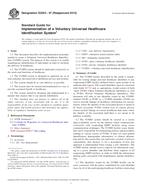 ASTM E2553-07(2013)..
ASTM E2553-07(2013)..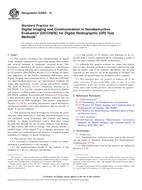 ASTM E2699-13
ASTM E2699-13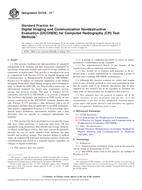 ASTM E2738-13e1
ASTM E2738-13e1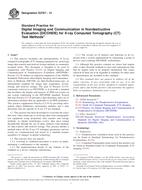 ASTM E2767-13
ASTM E2767-13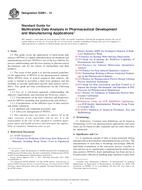 ASTM E2891-13
ASTM E2891-13
 Cookies
Cookies
